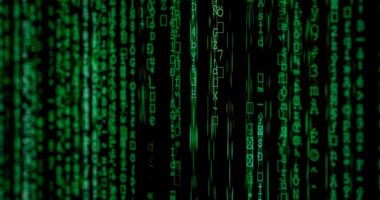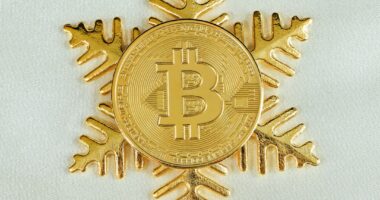NFT (non-fungible token) art has emerged as a significant trend in the art world in recent years. NFTs are unique digital assets stored on blockchain technology, ensuring their singularity and non-interchangeability. This form of digital art is tokenized, allowing it to be bought and sold as an asset.
The advent of NFT art has created new opportunities for artists to reach global audiences and monetize their work through previously unavailable channels. NFT art encompasses various digital formats, including paintings, animations, videos, and virtual reality experiences. The value of NFT art is derived from its scarcity and verifiable provenance, as each piece is authenticated and cannot be replicated or forged.
This technology enables artists to sell unique artworks directly to collectors, bypassing traditional intermediaries such as galleries or auction houses. The rise of NFT art has sparked discussions about the value of digital art and the role of technology in the art world. This emerging field continues to evolve, providing artists with a dynamic platform for creative expression and economic opportunities.
Key Takeaways
- NFT art is a digital form of artwork that is unique, verifiable, and owned by the buyer through blockchain technology.
- Choose the right tools and software such as digital drawing tablets, graphic design software, and NFT marketplaces to create and sell your NFT art.
- Develop your concept and style by researching current trends, experimenting with different techniques, and finding your unique artistic voice.
- Create and edit your artwork using high-quality images, adding metadata, and ensuring that your NFT meets the technical requirements of the marketplace.
- Minting your NFT involves uploading your artwork to a blockchain platform, creating a smart contract, and setting the terms of sale and royalties.
- Marketing and selling your NFT art involves building a strong online presence, engaging with the NFT community, and promoting your artwork through social media and NFT marketplaces.
- Engage with the NFT community by participating in forums, attending virtual events, and collaborating with other artists to gain exposure and support for your NFT art.
Choosing the Right Tools and Software
Digital Art Programs
Some popular options include Adobe Photoshop, Procreate, and Clip Studio Paint, which offer a range of tools for digital painting, illustration, and animation.
3D Art and Virtual Reality Experiences
For 3D art and virtual reality experiences, software such as Blender, Unity, and Unreal Engine can be used to create immersive and interactive NFTs.
Blockchain Platforms and Digital Wallets
In addition to art programs, artists also need to consider the blockchain platform they will use to mint and sell their NFTs. Ethereum is currently the most popular choice for NFTs, but there are other platforms such as Tezos, Flow, and Binance Smart Chain that offer different features and benefits. It’s important to research and understand the different blockchain platforms to choose the one that best suits your needs as an artist. Additionally, artists will need to set up a digital wallet to store their cryptocurrency earnings from NFT sales, so understanding how to use platforms like MetaMask or Trust Wallet is essential for navigating the world of NFT art.
Developing Your Concept and Style
Before creating NFT art, it’s important for artists to develop a strong concept and style that will resonate with collectors and the NFT community. This involves exploring different themes, subjects, and visual styles that reflect your artistic vision and personal expression. Whether it’s abstract digital paintings, surreal 3D sculptures, or vibrant animated gifs, having a clear concept and style will help you stand out in the competitive NFT market.
One approach to developing your concept and style is to draw inspiration from your own experiences, interests, and emotions. This could involve exploring personal narratives, cultural influences, or social commentary through your artwork. Another approach is to experiment with different techniques and mediums to find a unique visual language that sets your work apart.
By honing in on a specific concept and style, artists can create a cohesive body of work that tells a compelling story and resonates with collectors who are looking for something fresh and original in the NFT space.
Creating and Editing Your Artwork
Once you have a clear concept and style in mind, it’s time to start creating and editing your artwork. This may involve sketching out ideas, experimenting with different compositions, and refining your visual language to bring your concept to life. For digital paintings and illustrations, artists can use a variety of brushes, layers, and effects to add depth and texture to their work.
For 3D art and virtual reality experiences, artists can sculpt, texture, and animate their creations using specialized software. Editing your artwork is an important step in the creative process, as it allows you to fine-tune details, adjust colors and lighting, and make any necessary revisions before minting your NFT. This may involve using photo editing software to enhance the overall look of your piece or using 3D rendering software to optimize the visual quality of your creation.
By paying attention to the details and taking the time to refine your artwork, you can ensure that your NFT stands out as a high-quality and professional piece of digital art.
Minting Your NFT
Minting your NFT involves creating a unique token on a blockchain platform that represents your artwork as a digital asset. This process typically involves uploading your artwork to an NFT marketplace or platform, where it is verified, tokenized, and given metadata such as title, description, and edition number. Minting also involves setting the terms of sale for your NFT, including pricing, royalties, and any additional perks or benefits for collectors.
When minting your NFT, it’s important to carefully consider the details of your listing to attract potential buyers and collectors. This may involve writing a compelling description that tells the story behind your artwork, setting a fair price that reflects the value of your work, and offering incentives such as limited editions or unlockable content for collectors. By taking the time to mint your NFT thoughtfully and strategically, you can increase the visibility and desirability of your artwork in the competitive NFT market.
Marketing and Selling Your NFT Art

Here is the rewritten text with 3-4 Marketing Your NFT Artwork
After minting and listing your NFT for sale, it’s crucial to focus on marketing and selling your artwork to reach potential buyers and collectors.
### Building an Online Presence
Promoting your NFT on social media platforms such as Twitter, Instagram, and TikTok can help you reach a wider audience. Share behind-the-scenes content, process videos, and updates about your latest releases to engage with potential buyers.
### Networking and Collaborations
Engaging with the NFT community through forums, Discord channels, and virtual events can help you connect with like-minded artists and collectors who are interested in supporting your work. Participating in NFT drops, auctions, and collaborations with other artists can increase the visibility of your artwork and attract new collectors.
### Establishing Credibility and Exposure
Building a strong brand identity and establishing yourself as a reputable artist in the NFT space can help you gain trust and credibility with potential buyers. By being proactive in marketing and selling your NFT art, you can create opportunities for exposure and sales that will help you grow as an artist in the digital art market.
Engaging with the NFT Community
Engaging with the NFT community is an essential part of being a successful NFT artist. This involves participating in discussions, sharing knowledge, and supporting other artists within the community. By joining online forums such as Foundation, OpenSea, or Rarible, artists can connect with collectors, curators, and fellow creators who can provide valuable feedback and support for their work.
Collaborating with other artists on projects or exhibitions can also help you expand your network and reach new audiences within the NFT community. Attending virtual events such as conferences, workshops, and panel discussions can provide opportunities for learning from industry experts and gaining insights into the latest trends in NFT art. By actively engaging with the NFT community, artists can build meaningful relationships and find support within a rapidly growing and evolving digital art ecosystem.
In conclusion, creating NFT art is an exciting opportunity for artists to explore new possibilities in digital creativity and entrepreneurship. By understanding the unique nature of NFTs, choosing the right tools and software, developing a strong concept and style, creating high-quality artwork, minting strategically, marketing effectively, and engaging with the community, artists can position themselves for success in the competitive world of NFT art. With dedication, creativity, and a willingness to adapt to new technologies and trends, artists can thrive in this dynamic space while making meaningful contributions to the evolving landscape of digital art.
If you’re interested in learning more about the world of NFTs and how they are revolutionizing the art industry, you should check out this article on eth-news.com. It provides a comprehensive overview of the NFT market and how artists can leverage this technology to create and sell their digital masterpieces. This article will give you a deeper understanding of the potential of NFT art and how it is reshaping the art world.
FAQs
What is NFT art?
NFT art refers to digital artwork that is tokenized using blockchain technology. Each piece of NFT art is unique and can be bought and sold using cryptocurrency.
How do I create NFT art?
To create NFT art, you will need to create a digital artwork using software such as Adobe Photoshop or Procreate. Once your artwork is ready, you can then mint it as an NFT using a platform like OpenSea or Rarible.
What are the benefits of creating NFT art?
Creating NFT art allows artists to reach a global audience and sell their work directly to collectors without the need for intermediaries. Additionally, NFT art can provide artists with a new stream of income and the opportunity to experiment with new digital mediums.
What are some tips for creating stunning NFT art?
Some tips for creating stunning NFT art include experimenting with different digital mediums, focusing on storytelling and concept, and staying up to date with current trends in the NFT art space.
How can I protect my NFT art from theft or plagiarism?
To protect your NFT art from theft or plagiarism, you can include a watermark or signature in your artwork, register your copyright, and use platforms that offer built-in protections for NFTs. Additionally, creating a strong community around your art can help deter potential theft or plagiarism.





